Polestar's Product Manager Drives the Frothiest Cappuccino in Sweden
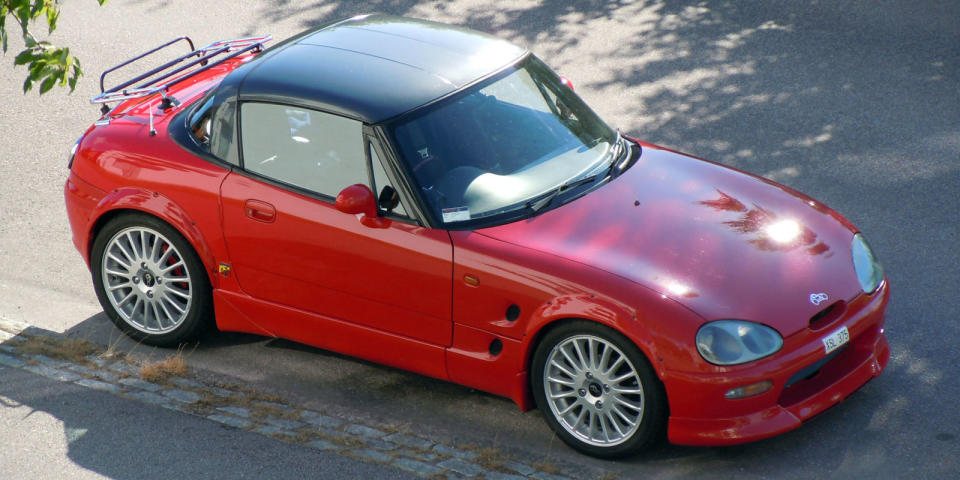
When I first met Lars Lagström, he was working as one of Volvo's top engineers. He was incredibly busy along with the entire team in Sweden, since Geely had just let them push the reset button on the company. Since then, he moved his office over to Polestar, just to make sure he can focus on what he likes to do the most: making very blue cars go even faster. Yet his personal project car is half the size of any Volvo today, packing some serious firepower behind a fake Abarth badge. Welcome to Engineers' Cars.
The Suzuki Cappuccino is one of the best kei cars ever made, designed for the Japanese market but also exported to the United Kindom thanks to the identical steering setup and the Brits' general love of lightweight deathtraps. But bringing it to Europe was a challenge.
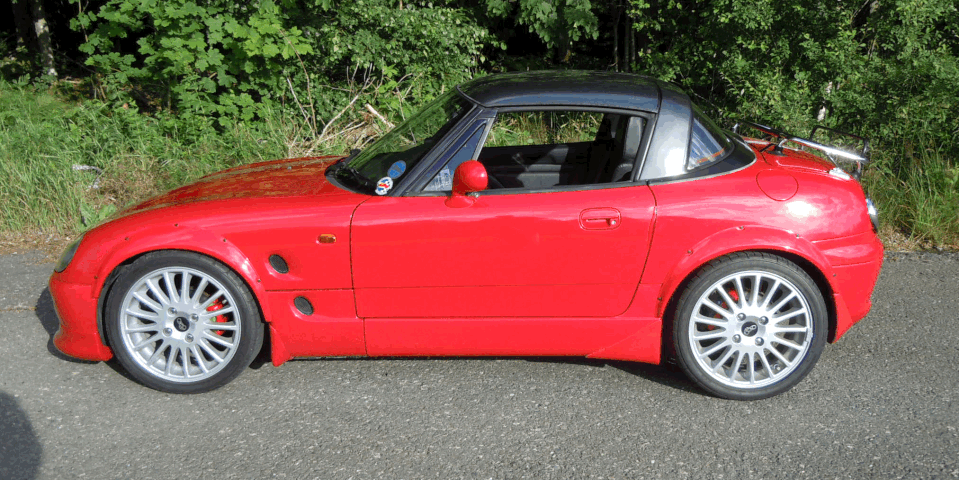
After going on sale in Japan in 1991, Suzuki had to make just 23 changes to the car to make it UK legal. The tiny roadster finally went on sale in Europe in 1993, but due to its popularity in its home market, the original allocation of 1500 cars was cut to 1182 units. Suzuki Japan kept the color choices slim too: 80 percent of UK Cappuccinos were red, with the rest coming in silver. Some 72 cars got sold to other European Suzuki dealers, while in the UK, the tighter emission regulations introduced in 1995 meant all remaining stock had to be registered by September 30 to avoid re-homologation, which was out of the question due to costs.
While a couple of Cappuccinos may have been originally imported to Sweden, Lars got his from England. He knew he needed one the moment he read an article about one of Nissan's Pike Factory retro cars, the Figaro. The magazine had pictures of other kei cars as well, and there it was: A stamp-sized picture of a Suzuki Cappuccino, a stamp-sized sports car.
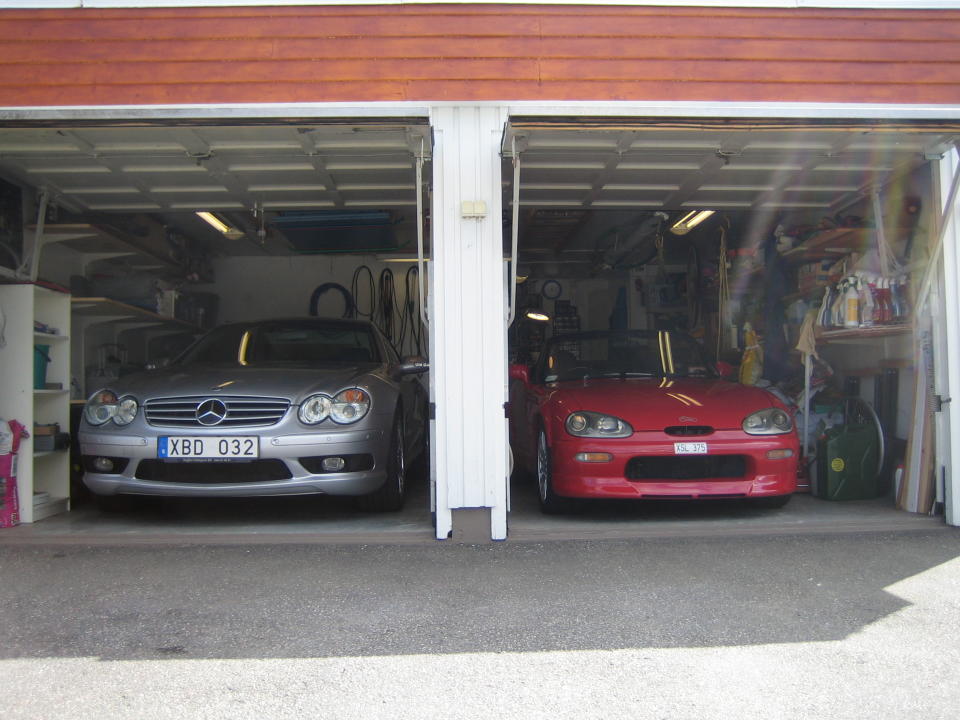
After selling a blue Fiat 124 Spider he bought as a wreck in 1983, he really didn't hesitate for long. Knowing that the last Cappuccinos were imported to the Isles in August, 1995, he quickly found a four-owner example with 75,412 miles on the clock, on eBay. After a full service and a belt change back in the UK, it was time for a great road trip with "the Cap" back to Sweden.
Being an engineer obsessed with motorsport, it didn't take long for the modifications to begin. After fixing some rust issues in the floor pan, Lars gradually upgraded the car, starting with different wheel setups, wrapped in Toyo's sticky R888s. Then came a lot of parts for Japan, where Suzuki has tuned the Cappuccino further for the remaining two model years.
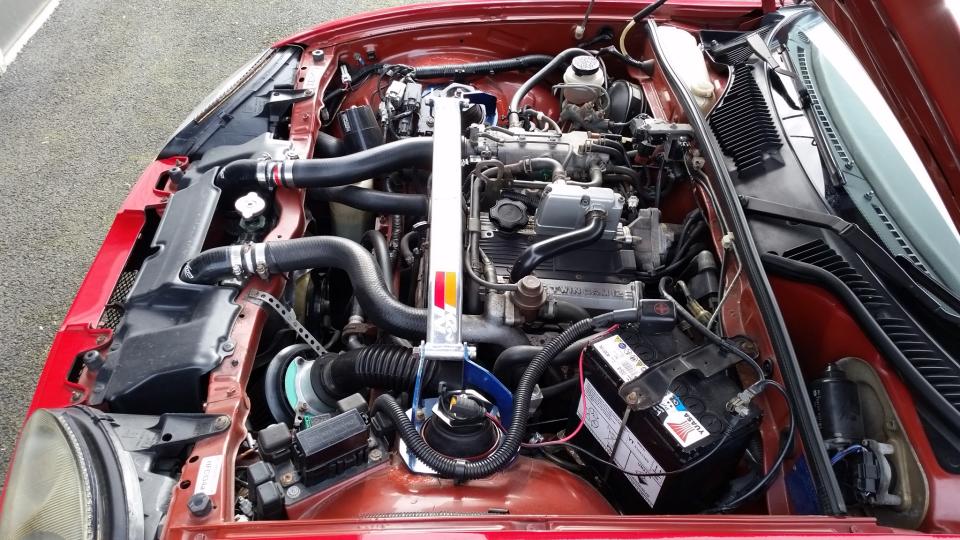
The 657cc three-cylinder turbo got a K&N air filter, a Jasma 5 Zigen 62mm free flow exhaust from the cat with a 90mm end pipe, an Adaptronic E420C ECU, which is a full 3D mapping system from Australia, a GTTI intercooler from a Daihatsu, 315cc injectors from Denso, a three bar MAP sensor, a knock sensor from Bosch and an electronic bleed valve from Jaycar. In stock form, a 1995 UK-spec Cappuccino had 64 horsepower. Lars' beefed up version puts down 90hp at the wheels, still with the standard turbocharger.
To make it handle, the suspension was updated with GAB adjustable shock absorbers front and rear, RS-R springs providing a 1.2 inch drop in ride height and strut braces at both ends, Meanwhile, the front brakes bite harder thanks to EBC's Green Stuff pads. Track ready, it is.
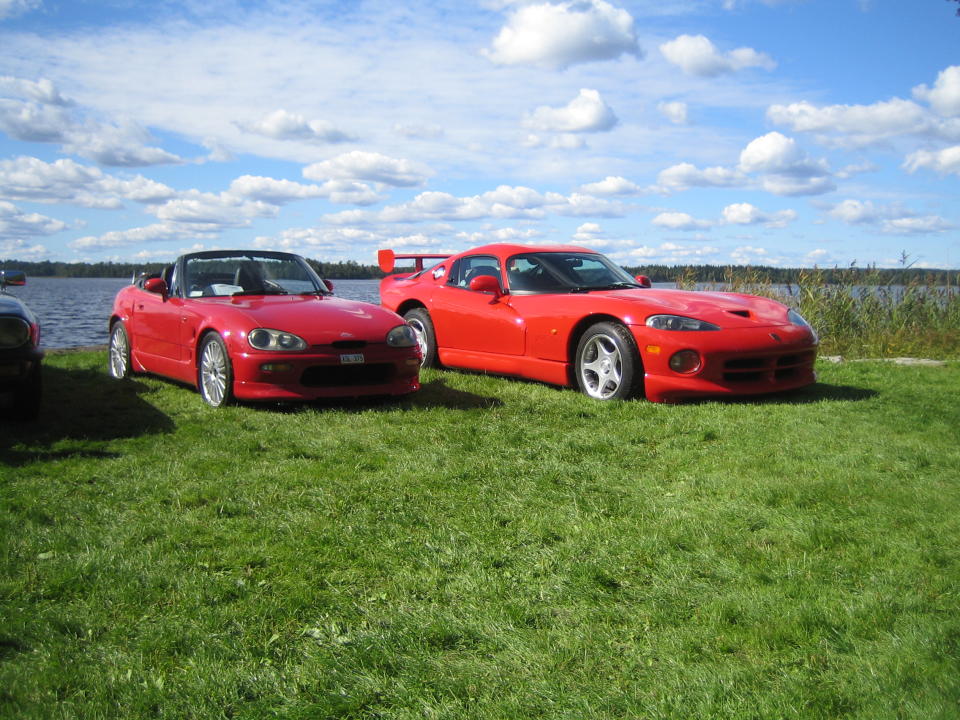
Since not many know what to make of a small red roadster in Sweden, its owner made sure to put a pair of Abarth badges on the rear fenders, just to maximize confusion. Other subtle changes to the exterior include wider fenders, Suzuki Sport Mud flaps, flat blade wipers and aftermarket lights. There's a also a cool trunk rack to help out the tiny storage area.
Inside the cabin, there's a boost gauge on the A pillar, a nice Momo Super Indy Wooden steering wheel, a net pocket on the transmission tunnel (again, practicality!), and a roll bar to satisfy the safety requirements.
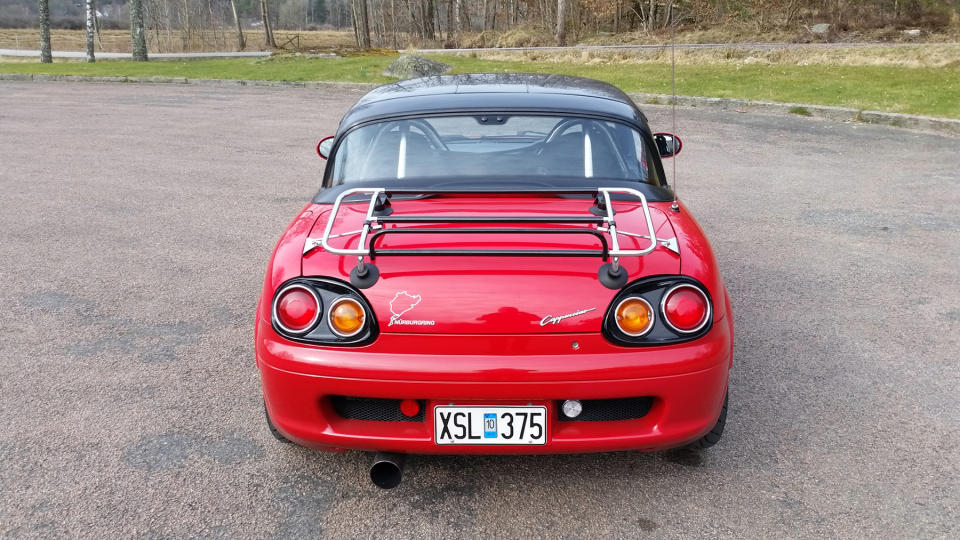
As well as ruling the Scandinavian curves for more then a decade now, Polestar's Project Manager also started a trend in Sweden with his JDM wonder.
A year ago, when he took his "Abarth" to an annual car show at Tjolaholm Castle south of Gothenburg, "a guy called Steen went bananas over this little thing," only to buy one himself soon after. Later, they met at a track day, and Steen told him that his son also got one, bringing the Cappu count to three in the Gothenburg area, out of eight in total in Sweden.
Future plans? Oh, he has some:
I have a engine with 2000km on the clock from an Arctic Cat snowmobile. It's the successor (Suzuki) engine with cam chains that I will fit in mine when there is time. With a tuning kit from JD Powersports in the USA, that engine that can deliver up to 165hp depending on intercooler setup, and will give a steady output between 130-150hp. My goal is 130 horsepower, which is 100% more then standard. I already have a clutch with flywheel from OS Giken to handle the power.
Sounds good.
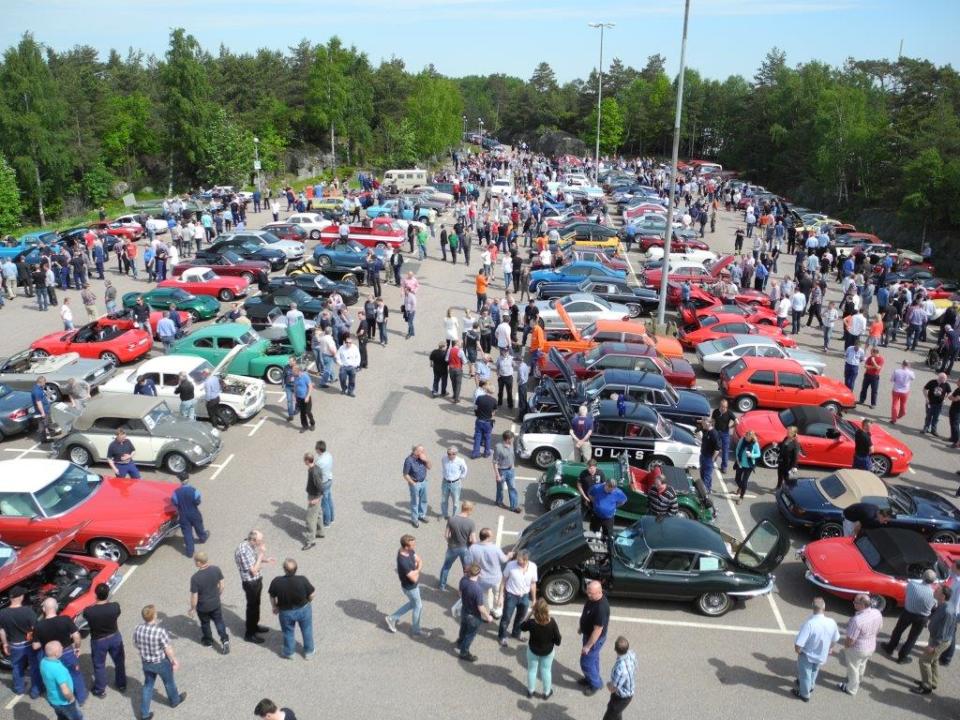
When I first met Lars Lagström, he was working as one of Volvo's top engineers. He was incredibly busy along with the entire team in Sweden, since Geely had just let them push the reset button on the company. Since then, he moved his office over to Polestar, just to make sure he can focus on what he likes to do the most: making very blue cars go even faster. Yet his personal project car is half the size of any Volvo today, packing some serious firepower behind a fake Abarth badge. Welcome to Engineers' Cars.
The Suzuki Cappuccino is one of the best kei cars ever made, designed for the Japanese market but also exported to the United Kindom thanks to the identical steering setup and the Brits' general love of lightweight deathtraps. But bringing it to Europe was a challenge.

After going on sale in Japan in 1991, Suzuki had to make just 23 changes to the car to make it UK legal. The tiny roadster finally went on sale in Europe in 1993, but due to its popularity in its home market, the original allocation of 1500 cars was cut to 1182 units. Suzuki Japan kept the color choices slim too: 80 percent of UK Cappuccinos were red, with the rest coming in silver. Some 72 cars got sold to other European Suzuki dealers, while in the UK, the tighter emission regulations introduced in 1995 meant all remaining stock had to be registered by September 30 to avoid re-homologation, which was out of the question due to costs.
While a couple of Cappuccinos may have been originally imported to Sweden, Lars got his from England. He knew he needed one the moment he read an article about one of Nissan's Pike Factory retro cars, the Figaro. The magazine had pictures of other kei cars as well, and there it was: A stamp-sized picture of a Suzuki Cappuccino, a stamp-sized sports car.

After selling a blue Fiat 124 Spider he bought as a wreck in 1983, he really didn't hesitate for long. Knowing that the last Cappuccinos were imported to the Isles in August, 1995, he quickly found a four-owner example with 75,412 miles on the clock, on eBay. After a full service and a belt change back in the UK, it was time for a great road trip with "the Cap" back to Sweden.
Being an engineer obsessed with motorsport, it didn't take long for the modifications to begin. After fixing some rust issues in the floor pan, Lars gradually upgraded the car, starting with different wheel setups, wrapped in Toyo's sticky R888s. Then came a lot of parts for Japan, where Suzuki has tuned the Cappuccino further for the remaining two model years.

The 657cc three-cylinder turbo got a K&N air filter, a Jasma 5 Zigen 62mm free flow exhaust from the cat with a 90mm end pipe, an Adaptronic E420C ECU, which is a full 3D mapping system from Australia, a GTTI intercooler from a Daihatsu, 315cc injectors from Denso, a three bar MAP sensor, a knock sensor from Bosch and an electronic bleed valve from Jaycar. In stock form, a 1995 UK-spec Cappuccino had 64 horsepower. Lars' beefed up version puts down 90hp at the wheels, still with the standard turbocharger.
To make it handle, the suspension was updated with GAB adjustable shock absorbers front and rear, RS-R springs providing a 1.2 inch drop in ride height and strut braces at both ends, Meanwhile, the front brakes bite harder thanks to EBC's Green Stuff pads. Track ready, it is.

Since not many know what to make of a small red roadster in Sweden, its owner made sure to put a pair of Abarth badges on the rear fenders, just to maximize confusion. Other subtle changes to the exterior include wider fenders, Suzuki Sport Mud flaps, flat blade wipers and aftermarket lights. There's a also a cool trunk rack to help out the tiny storage area.
Inside the cabin, there's a boost gauge on the A pillar, a nice Momo Super Indy Wooden steering wheel, a net pocket on the transmission tunnel (again, practicality!), and a roll bar to satisfy the safety requirements.

As well as ruling the Scandinavian curves for more then a decade now, Polestar's Project Manager also started a trend in Sweden with his JDM wonder.
A year ago, when he took his "Abarth" to an annual car show at Tjolaholm Castle south of Gothenburg, "a guy called Steen went bananas over this little thing," only to buy one himself soon after. Later, they met at a track day, and Steen told him that his son also got one, bringing the Cappu count to three in the Gothenburg area, out of eight in total in Sweden.
Future plans? Oh, he has some:
I have a engine with 2000km on the clock from an Arctic Cat snowmobile. It's the successor (Suzuki) engine with cam chains that I will fit in mine when there is time. With a tuning kit from JD Powersports in the USA, that engine that can deliver up to 165hp depending on intercooler setup, and will give a steady output between 130-150hp. My goal is 130 horsepower, which is 100% more then standard. I already have a clutch with flywheel from OS Giken to handle the power.
Sounds good.

You Might Also Like

 Yahoo Autos
Yahoo Autos 